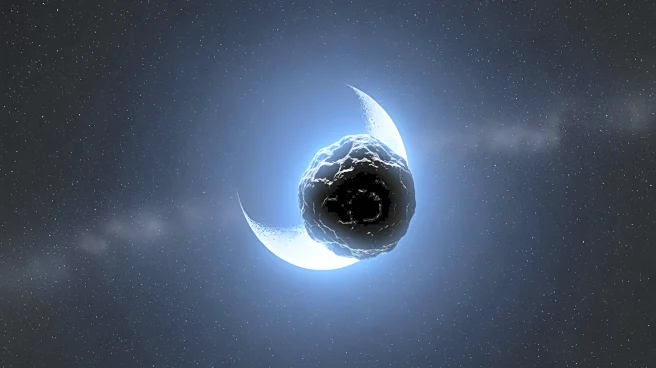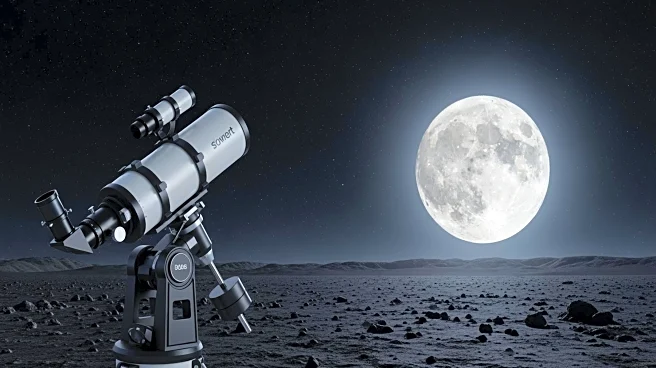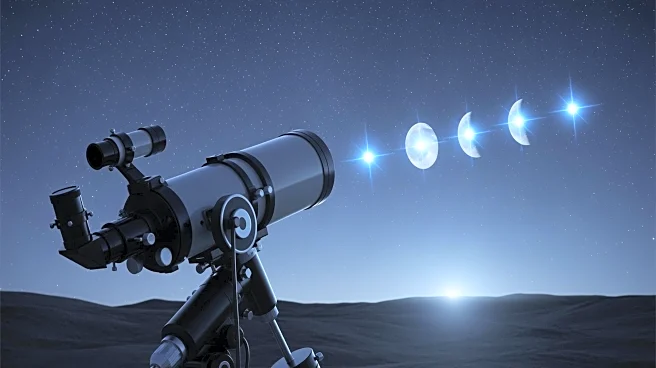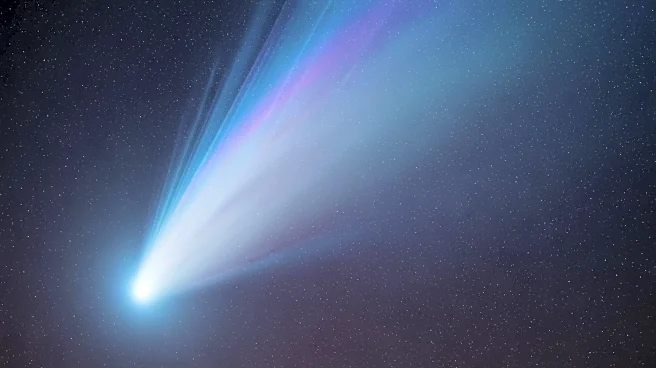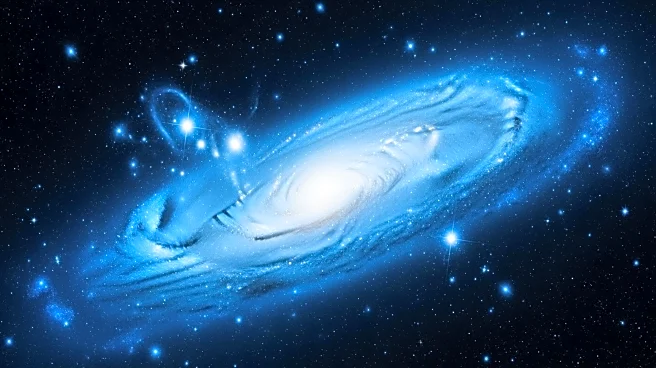What's Happening?
A new study has provided an explanation for the asymmetrical dust cloud that surrounds Earth's moon. This cloud, which is skewed towards the side of the moon facing the sun, is formed by micrometeoroid
impacts on the lunar surface. These impacts lift lunar dust, creating a cloud that extends several hundred miles above the surface. The study, led by Sébastien Verkercke from the Centre National D'Etudes Spatiales, suggests that the temperature differences between the moon's day and night sides contribute to the cloud's lopsidedness. The moon experiences extreme temperature variations, with daytime temperatures soaring and nighttime temperatures plummeting. These differences affect the amount of dust lifted by meteoroid impacts, with more dust being raised on the warmer, daytime side.
Why It's Important?
Understanding the dynamics of the moon's dust cloud is crucial for future lunar exploration and satellite operations. The presence of this dust cloud can impact the safety and functionality of equipment and missions on or near the moon. The study's findings could also inform the design of lunar missions, ensuring that spacecraft and instruments are better prepared to handle the dust environment. Additionally, the research provides insights into similar phenomena on other celestial bodies, such as Mercury, which could have even more pronounced dust clouds due to its higher temperatures.
What's Next?
The research team plans to extend their analysis to other bodies in the solar system that are impacted by small meteoroids. Mercury, with its extreme temperature differences, is of particular interest. Further studies could enhance our understanding of dust clouds in space and their implications for planetary science and exploration.


